- Home
- Michael Grant
An Artful Assassin in Amsterdam
An Artful Assassin in Amsterdam Read online
Contents
Cover
A selection of titles by Michael Grant
Title Page
Copyright
Dedication
Chapter One
Chapter Two
Chapter Three
Chapter Four
Chapter Five
Chapter Six
Chapter Seven
Chapter Eight
Chapter Nine
Chapter Ten
Chapter Eleven
Chapter Twelve
Chapter Thirteen
Chapter Fourteen
Chapter Fifteen
Chapter Sixteen
Chapter Seventeen
Chapter Eighteen
Chapter Nineteen
Chapter Twenty
Chapter Twenty-One
Chapter Twenty-Two
Chapter Twenty-Three
Chapter Twenty-Four
Chapter Twenty-Five
Chapter Twenty-Six
Chapter Twenty-Seven
Chapter Twenty-Eight
Chapter Twenty-Nine
Chapter Thirty
A selection of titles by Michael Grant
Gone series
GONE
HUNGER
LIES
PLAGUE
FEAR
LIGHT
VILLAIN
David Mitre thrillers
A SUDDEN DEATH IN CYPRUS *
AN ARTFUL ASSASSIN IN AMSTERDAM *
* available from Severn House
AN ARTFUL ASSASSIN IN AMSTERDAM
Michael Grant
This ebook is copyright material and must not be copied, reproduced, transferred, distributed, leased, licensed or publicly performed or used in any way except as specifically permitted in writing by the publishers, as allowed under the terms and conditions under which it was purchased or as strictly permitted by applicable copyright law. Any unauthorised distribution or use of this text may be a direct infringement of the author’s and publisher’s rights and those responsible may be liable in law accordingly.
First published in Great Britain and the USA 2019 by
SEVERN HOUSE PUBLISHERS LTD of
Eardley House, 4 Uxbridge Street, London W8 7SY.
This eBook edition first published in 2019 by Severn House Digital
an imprint of Severn House Publishers Limited
Trade paperback edition first published
in Great Britain and the USA 2020 by
SEVERN HOUSE PUBLISHERS LTD.
Copyright © 2019 by Michael Grant.
The right of Michael Grant to be identified as the author of this work has been asserted in accordance with the Copyright, Designs & Patents Act 1988.
British Library Cataloguing in Publication Data
A CIP catalogue record for this title is available from the British Library.
ISBN-13: 978-0-7278-8904-1 (cased)
ISBN-13: 978-1-78029-637-1 (trade paper)
ISBN-13: 978-1-4483-0336-6 (e-book)
Except where actual historical events and characters are being described for the storyline of this novel, all situations in this publication are fictitious and any resemblance to living persons is purely coincidental.
This ebook produced by
Palimpsest Book Production Limited,
Falkirk, Stirlingshire, Scotland
To Katherine.
ONE
It was quite an original murder attempt. I approved of the ambition if not of the practicality. I’d probably have approved even more had I not been the intended victim.
It was not some panic move, some spur of the moment thing, a sudden outburst. No, this was deliberate; calculated not improvised, unique, interesting, unusual. You could say it had a local vibe to it as it used the geography of the urban terrain to effect. This was not a method of murder you could use anywhere else, aside from Venice.
Bespoke murder, locally sourced and no doubt carbon-neutral.
I was in Amsterdam, where I’d been lured aboard a thirty-foot open boat by a woman I was seeing – an Englishwoman named Tess who was beautiful, in her late thirties with red hair, quick wit and talent. We had struck up a conversation in a coffee shop of the Amsterdam variety, where I had been mildly high and had stared a bit too long at her diamond earrings.
I no longer steal jewelry – or anything, really – but in the same way that a long-retired carpenter will still gaze fondly at a nice piece of hardwood, seeing the rocking chair within, I had automatically calculated the likely street value of Tess’s diamonds. The earrings were yellow gold, diamond-studded hoops, not ostentatious, but not the sort of thing you picked up at the flea market, either. Twelve grand retail.
Being somewhat baked it had taken me two minutes of staring to accomplish an analysis I’d normally have done with a glance. Tess mistook my interest in her ears for interest in herself and well, one thing led to another, as it will do when both parties are of diminished capacity and one party’s hotel (hers) was conveniently right next door.
Tess had recently divorced. Cause of divorce: adultery. Her husband’s, not hers – shocking, I know – and she had run away to Amsterdam with a few of her female friends to show the faithless bastard that whatever he could do, she could do and twice as hard.
It turned out that Tess had more than just the earrings. She had a sweet little green velvet-lined jewelry case in her hotel safe. Combination: 6909. I had seen her punching in this number with a bit of purely accidental side-eye, and while she was using the facilities I’d given in to the natural curiosity anyone might have and had opened the safe. And looked at her green velvet box containing – rough estimate again – a hundred and seventy-five to two hundred large in gold, diamonds and emeralds. Her now-tragic engagement ring alone was worth a good fifty Gs.
And I don’t want to brag but I took none of it. I did not even take one of the diamond-and-emerald pendant earrings despite knowing that a woman who finds herself missing a single earring will assume it was lost, not stolen.
Nor did I photograph the pieces so I could have a paste knock-off made which I could use to replace Tess’s jewelry so she wouldn’t notice the switch until I was well away.
I didn’t even use my phone to make a digital copy of her NFC – that’s Near Field Communication – hotel-room key card despite the fact that even I can make the app work pretty well. Mostly.
How virtuous was I? So virtuous I didn’t even ensure that her hotel-room window locks were jammed and the blocks removed so as to effect an easier second-story job later.
I did none of those things, which, frankly, was an amazing display of maturity, morality and self-restraint.
For me.
I did shoot front and back pictures of all her credit cards, but that was not for use now, it was for possible use later, emergency use. Only emergency. Taking the credit card pics was pure reflex, and it wasn’t really a crime unless I used them.
‘Do you need a refill, David?’ Tess called to me from the stern where the women were gathered. I was in the bow looking Byronic while also signaling chilly irritation.
A refill? You tricked me aboard this hellish boat, which I, quite naturally, assumed meant a romantic evening cruise preparatory to horizontal (and vertical, if I was feeling energetic) fun later. Instead I am the sole male in a gaggle of women. I am being used as a prop, Tess, dehumanized, treated as an object by you and your drunken friends. Pointed at. Leered at. Laughed at. You’re damned right I need a refill. I said none of that.
‘I’m fine,’ I sniffed.
‘Yes, you are,’ an unrecognized female voice said, eliciting laughter and even a ‘Woo!’
Tess was smart and accomplished, a
songwriter of all things, responsible for several lucrative songs in what I think of as the ‘mawkish crap’ genre of love songs for the sort of women who really need to reassess what actual men are like if they are not to suffer a lifetime of romantic disappointment.
I liked Tess. But I liked her a bit less now that I realized the night-time canal cruise she had arranged involved her friends, and their friends, all female, most British, all divorced or broken up, and all drunk in that rowdy, belligerent-yet-horny way women at the upper limits of the MILF category can be.
It may seem ungallant of me to feel aggrieved, but I was on a boat with seven mojito-powered women, each of whom had excellent reasons to despise my sex. This event was a sort of riff on what the Brits call a ‘hen party’, which generally involves half a dozen beastly drunk women, one of whom is to be married; they are typically young women at that melancholy point in life when they are still capable of optimism about the hairier sex. Poor things. This party was a sort of alt-hen party with years of real-world experience of men.
And there I was: a man.
Tess of course thought the whole thing terribly funny. Twice I’d heard her say, ‘No, David’s not like that at all,’ which she modified by adding, ‘of course, I’m not married to him, hah hah hah.’
To which one of the loutish creatures had said, ‘Too right. Your David’s not a marrying man, he’s the rumpy-pumpy sort.’
Rumpy-pumpy. Those very words. With accompanying seated pelvic thrust.
Also, ‘your David’? I’m not fond of possessive pronouns attached to me by people other than me.
I was in need of more alcohol, especially as the night had clouded up and the temperature had dropped toward uncomfortable, but the on-board selection was heavy on the flavored vodkas (a crime the Hague really must address), gin, the inevitable Bailey’s, a lot of rum and a wide array of mixes and garnishes meant to distract from the lousiness of the booze. This bar rested atop the only superstructure, a blocky pedestal amidships which also supported the wheel, behind which stood the boat’s skipper, a Dutch woman who I hoped did not share in the drunkenness of her passengers. The skipper could be seen smiling in discreet appreciation of what I can only describe as virulent anti-male bigotry.
One whiskey, just one, decorated the boat’s bar, the eternal Jack Daniel’s, and that had been dangerously depleted following a round of Jack and cola shots for the harpies in the stern.
‘What I would like to know is whether he’s actually any good at the rumpy-pumpy?’
That’s a translation. The original was, ‘Wha ah d’like a know is (hiccup) is he acthly goo at pumply-rumply? Pumply. Rumpy-rumpy. (Giggle.) Fucking.’
This from a woman I knew to be a bank vice president in the City. Compensation package north of three million a year. Better than two hundred employees under her control. Regular appearances on Sky News. God only knew what baubles she had in her hotel safe.
Tess’s answer was inaudible to me since I was in my bow perch as far from them as I could get without walking on water, maintaining my stoic dignity. But I heard the response: loud, braying laughter with a lascivious edge to it.
‘Woo!’
I felt their eyes on me.
I was a conversation piece, an avatar of my sex, a token, a mere object. Worse yet I was a bit of bling, Tess showing living proof that she could still get a man. I was being used.
I was Tess’s trophy.
My God, the justifiable outrage I could be reveling in if only I were capable of a greater degree of hypocrisy. But given my life and my career there was really no question that I had it coming. Turnabout is fair play, as either Shakespeare or the Bible must have said, though perhaps more eloquently.
After the first half hour with Tess’s gang of ruffians, I had actually thought, Just kill me, not realizing that it would turn out to be foreshadowing.
I saw the aspiring murderer in the middle of the Leliegracht (lay-lee-khchkrachkght) bridge, but it was night and what I saw by the lights of the narrow townhouses fronting the canal was shape and shadow without features. I would not have noticed him at all except that he had what I took to be a belt or maybe a bicycle chain in his hand, a serpentine thing, black against the cold light. It was impossible to see his race or features, impossible to judge his height or age, though my first impression was that he was a slight fellow. He was wearing a raincoat with the hood up, though it was not quite raining. That last detail should perhaps have been a warning, but who expects to be attacked while on a boat motoring down a canal? In Amsterdam?
He had chosen his bridge well. There are bridges across the canals roughly every city block, all of them lined with the shabby, chained-up bicycles that are to Amsterdamers what cars are to Californians, but some bridges are busier than others. Some bear the weight of four lanes of traffic and a tramline. The Leliegracht bridge however is not a main thoroughfare, the street comes in from the east tracking a narrow east-west canal, crosses the Prinsengracht and dead-ends. No trams, no trucks, only local traffic.
I was standing on the bow like a disgruntled George Washington crossing the Delaware, a glowing cigar in my mouth, a plastic cup containing the last of the Jack, as exposed as a Central Park flasher.
As the boat’s bow reached the bridge I saw the hooded shadow above lean over the rail. Canal bridges are low, low enough that standing in the high bow I was just getting ready to duck. Low enough that the shadow and I could just about have shaken hands, had we both stretched a bit.
I didn’t see the noose. I did feel it, though, as something hit the back of my neck. My first thought was that one of the women had thrown something at me. Roughly half a second later I had a different idea entirely because the boat kept moving, doing maybe five miles an hour, and I was just beneath the bridge when the noose tightened suddenly, cutting off both air and blood and threatening to separate my vertebrae.
I cried out in surprise. ‘Urkh!’ A very nearly Dutch sound.
I dropped my cigar and my drink and clawed with cat-like speed at the rope and was just able to insert my fingers into the noose when the rope went iron-taut and I was yanked back hard, like a stunt man taking a shotgun blast. Yanked right off my feet.
It hurt.
My heels pounded the deck, and then a bench, and then my back hit the center console so hard I thought my spine might have been snapped. I was dragged backward, kicking and flailing over bottles of vodka and tonic water, which made an astonishing noise as bottles fell and shattered on the deck while I made sounds that never escaped my throat.
Over the bottles I went, over the wheel with big knobs that gouged my back, drawn right past the skipper who stepped nimbly aside, made a grab for me, caught me around the waist and instantly lost me.
Then I was hauled right through the mass of Tess’s friends, knocking women down, kicking them in my frenzy, holding the noose with my fingers and realizing I wasn’t strong enough to stop it cutting off blood and air – two things I find useful in remaining alive.
And all at once I was in the canal. In the canal, in black water decorated by floating debris, beneath the bridge, kicking like mad as the party boat motored on. I saw shocked and angry faces aimed my way.
Tess yelled, ‘David!’
One of her friends yelled, ‘Hey, arsehole!’
I think they saw it as me spoiling their party. I had, after all, wiped out most of the booze.
The boat moved on and the current held me under the bridge, ancient brick supports on both sides, blank concrete above. The current tugged at me and kept the rope taut. The pressure was so great that my fingers, rather than helping me escape, were pressed into the arteries of my neck, blocking my heart’s frantic effort to keep my brain oxygenated. My head felt twice its normal size, a stretched water balloon. My throat convulsed as my lungs became aware that they were sucking on nothing and sent my brain strongly worded signals that it was time to panic.
Panic, right now!
But I’ve never found panic to be helpful, so
I shifted my right hand sideways a bit in the noose and felt a surge of blood through my carotid arteries. No air, but a bit of blood. I saw stars and geometric patterns and my peripheral vision collapsed into the tunnel view that precedes unconsciousness, which would be followed by death.
Oh my God, I thought, I could actually die.
The absurdity of it struck me and I might have laughed, if it had been happening to someone else. How many times had I escaped perils in my life, only to be choked out in an Amsterdam canal? It was ridiculous.
I had a sudden flash of what was below me. I’d heard somewhere that 12,000 bikes a year end up in the canals, and I pictured my dying body, trailing tiny bubbles, sinking into a gloomy, submarine bicycle graveyard. Though someone would have to cut the rope first.
My lungs burned. My head was a big balloon full of blood. But the wannabe killer was not hauling on the rope, which would have finished me. No, he must have tied it off to the railing and fled, which is what I’d have done had I been fool enough to think of lynching a man off a boat. It was prudent but also served to undermine his attempt to finish me off because a human body in water is buoyant and the (attempted) murderer had left the rope a couple of feet too long so that I was submerged almost to my waist.
It finally occurred to me that rather than fighting the noose I should lessen the tension by grabbing the taut rope with my freed right hand and pulling hard while kicking to raise myself in the water.
Sure enough, this did lessen the pressure and I was able to gasp half a lungful of sweet, sweet air, instantly coughed up. More trash floated past me, paper sleeves that had held bitterballen, cigarette butts, water bottles. On the bank of the canal I saw that some people had begun to point – not do anything useful like cut the damn rope, of course, but they could point.
As long as I could hold onto the rope I could avoid dying, which was rather a flaw in the murderer’s thinking. I congratulated myself on that insight and allowed myself a sneer.
Yeah, asshole, that’s why when they hang people they tie their arms.

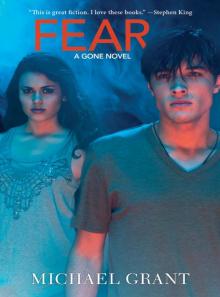 Fear
Fear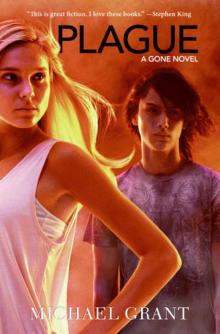 Plague
Plague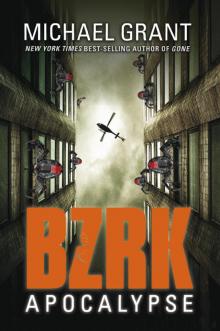 BZRK: Apocalypse
BZRK: Apocalypse Bzrk
Bzrk Love Sucks and Then You Die
Love Sucks and Then You Die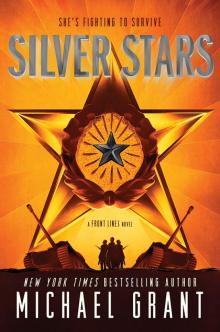 Silver Stars
Silver Stars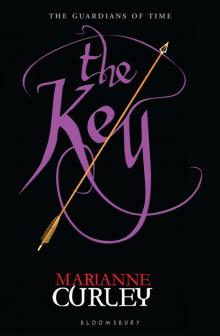 The Key
The Key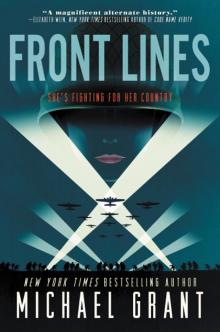 Front Lines
Front Lines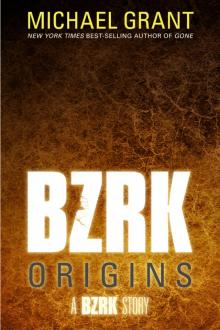 BZRK Origins
BZRK Origins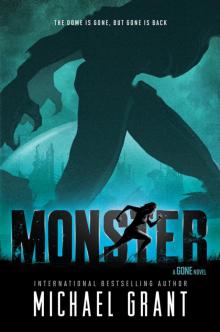 Monster
Monster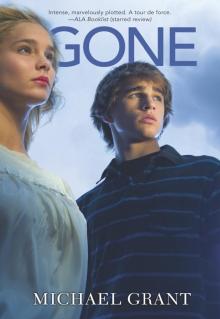 Gone
Gone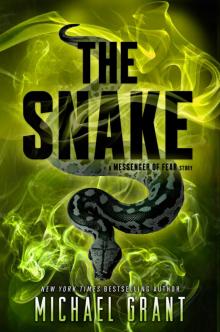 The Snake
The Snake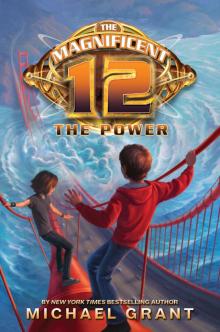 The Power
The Power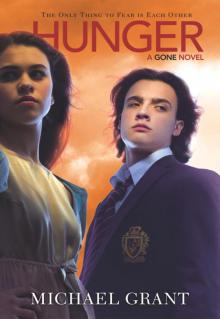 Hunger
Hunger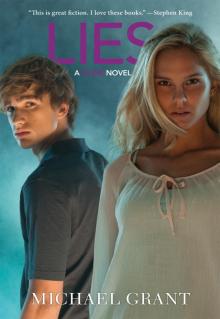 Lies
Lies A Sudden Death in Cyprus
A Sudden Death in Cyprus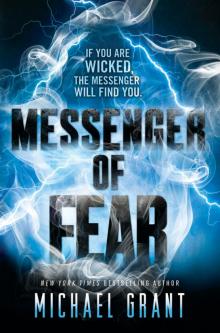 Messenger of Fear
Messenger of Fear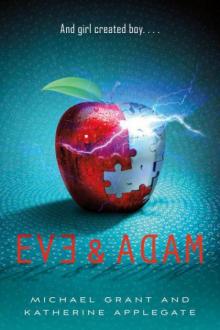 Eve & Adam
Eve & Adam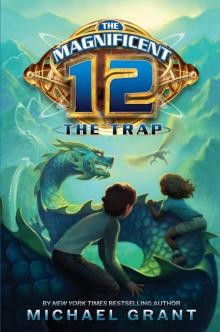 The Trap
The Trap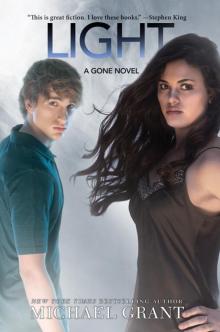 Light
Light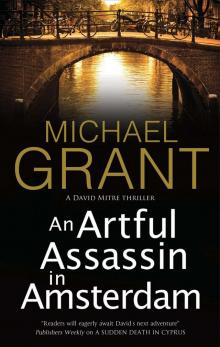 An Artful Assassin in Amsterdam
An Artful Assassin in Amsterdam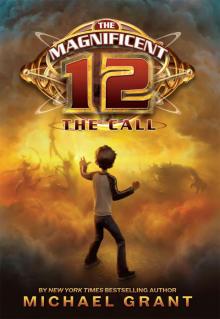 The Call
The Call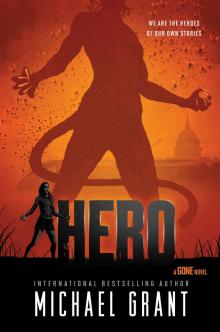 Hero
Hero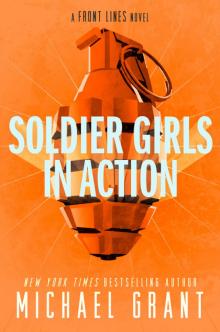 Soldier Girls in Action
Soldier Girls in Action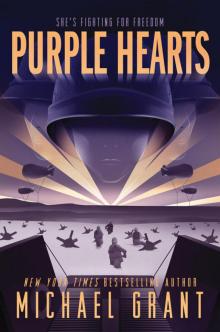 Purple Hearts
Purple Hearts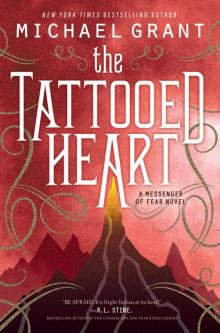 The Tattooed Heart
The Tattooed Heart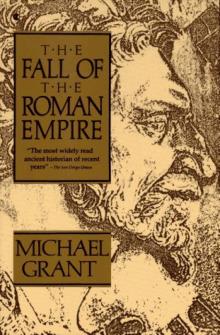 The Fall of the Roman Empire
The Fall of the Roman Empire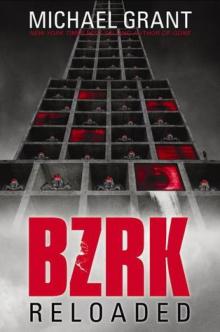 BZRK Reloaded
BZRK Reloaded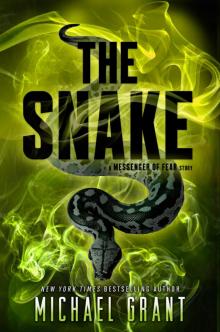 Messenger of Fear Novella #1
Messenger of Fear Novella #1 The Magnificent 12
The Magnificent 12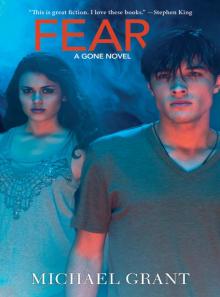 Fear: A Gone Novel
Fear: A Gone Novel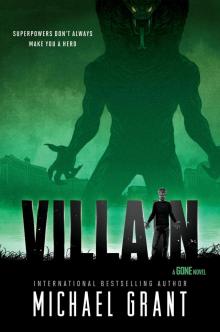 Villain
Villain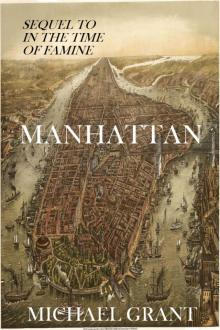 Manhattan
Manhattan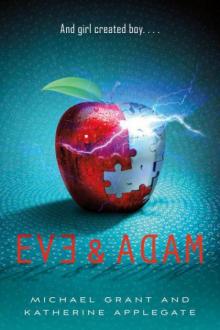 Eve and Adam
Eve and Adam Plague: A Gone Novel
Plague: A Gone Novel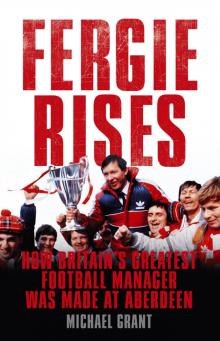 Fergie Rises
Fergie Rises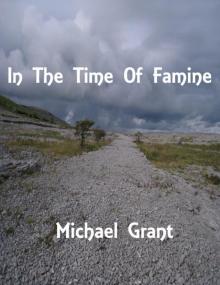 In the Time of Famine
In the Time of Famine Hunger_A Gone Novel
Hunger_A Gone Novel Lies g-3
Lies g-3